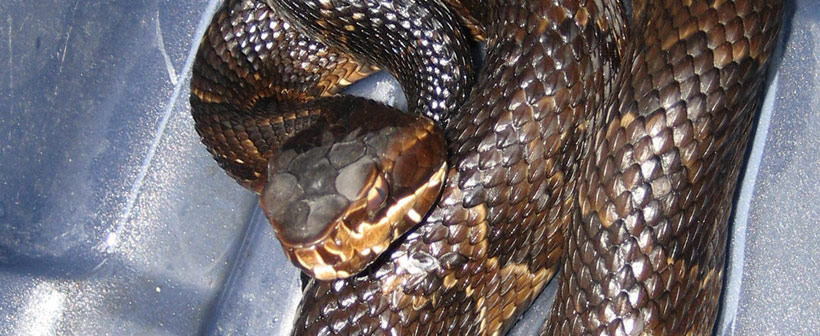Venomous Snakes of North Carolina
With nearly 40 different species of snakes in North Carolina, it is only natural that some of these would be quite dangerous. There are several different species of venomous snakes that are found in the state, meaning that people need to be careful when they come across a snake that they are not sure exactly what it is.

Here are some of the more commonly found venomous snakes in North Carolina.
Copperhead – this is found throughout the state, and what makes it quite dangerous is that most adults are less than three feet in length. This not only makes them a lot more difficult to see, but they can easily be confused with other snakes that are not dangerous. With a pale tan or pink background, they are not always that easy to see crawling across the ground. This is a kind of pit viper meaning that there is a sensory pit that is located between the eyes. This pit helps the reptile detect warm-blooded animals that it would seek to attack and eat.
Timber Rattlesnake – This is another venomous snake that can be found just about anywhere in the state. This snake is also referred to as the canebrake snake, and it can grow to be nearly six feet in length. The color and pattern of this snake makes it easy for the snake to blend into the environment, so it is hard to locate. There are large fangs on this snake and it releases enough venom to kill an adult male with no issue. The one good thing about this snake is that it not very aggressive, not like most other kinds of rattlesnakes.
Pymgy Rattlesnake – this snake is found in the eastern part of North Carolina, and is very small in length. The average adult is usually no more than about 22 inches in length, making it very hard to see. It also does not make much noise when it is moving about, so it can be on top of you long before you are aware it is near. This rattlesnake has a reddish-orange color that is running down its back. This is a protected snake in the state, meaning that if you kill it you can pay a hefty fine or even serve jail time. This is one of many snakes in the state that are protected.
Cottonmouth – commonly referred to as a water moccasin, this snake is well-known for the fact that it will open its mouth wide and hiss when it feels that it is challenged or in danger. The diet of this snake is primarily aquatic based life like fish and frogs. They are black for the most part with some having gray, brown, or tan colored bans.
Read more: Snake Control, Venomous Snakes of Florida, How to Identify Snakes, How to Kill Snakes.
|